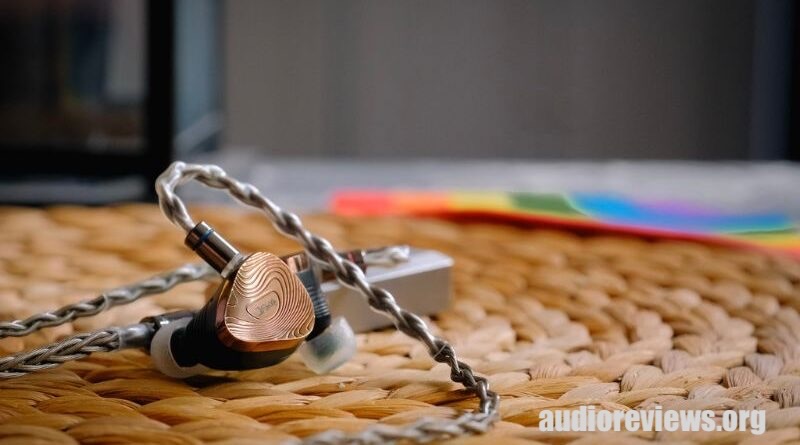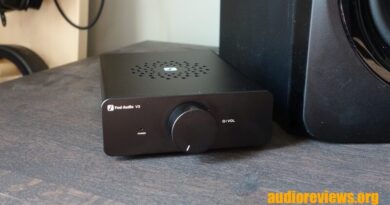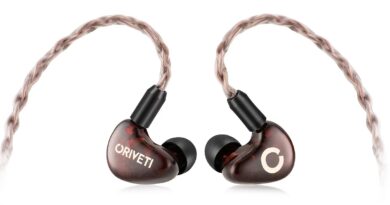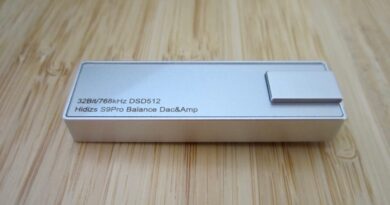Tangzu Xuanwu Gate IEM Review – Almost Flagship
The Tangzu Xuanwu Gate stuns with an unboxing experience and accessories rarely seen for 649$ however, the sound while technically proficient, suffers a bit from unorthodox tuning choices.
PROS
- The million-dollar unboxing experience
- Technical capability is high for the price
- Build quality is outstanding
CONS
- A tad thin-sounding
- The tuning exaggerates apparent details
- It needs a warm source to sound balanced
In this Article
Introduction
Tangzu is a mostly budget IEM producer from China and its preferred hunting ground is the sub-50$ market. The $649 Xuanwu Gate is their swing at what’s now the mid-fi segment and once I had the box in my hands, it was clear as day that Tangzu wasn’t pulling any punches.
Tech-wise Xuanwu Gate checks all the right boxes. It’s a tribrid, so lows are done by a dynamic driver and I won’t have to ponder whether it’s me or BA bass is actually a thing. And the very highs are done by Sonion electret modules which I tend to love.
So let’s go ahead and explore whether Xuanwu Gate has any substance behind those good looks!
Specifications
Drivers: 10mm carbon composite DD, 2x BA mids, 2x BA highs, 2x EST supertweeters Impedance: 10.5Ω 1kHz±20% Sensitivity: 103dB/mW Frequency Range: 7-20,000 Hz Cable: Single crystal copper silver-plated 1.2m±5% Connector: 2pin 0.78 mm, 3.5mm TRS and 4.4mm Pentaconn swappable via 4-pin connector Tested at: 649$ Purchase Link: Linsoul, Tangzu Homepage |
Physical Things and Usability
| In The Box: IEMs, 2x M-sized silicon tips, S/M/L balanced and wide-bore Tang Sancai tips, 1.2m cable, 3.5mm jack, 4.4mm jack, carrying case. |
| Appearance, Haptic, Build Quality: in terms of looks and overall feel the Tangzu Gate surpasses many IEMs 4 times the price. |
| Ergonomics: the cable has low microphonics and the length works fine for both portable and desktop use. |
| Comfort, Fit: the shell fits well but the size can be an issue for smaller ears, all tribrids have large shells. |
| Isolation: average due to acoustic porting. |
Packaging
As I alluded to above – TangZu Xuanwu Gate absolutely spoils whoever gets their grubby mitts on them. I’ve had desktop DACs and amps come to me in smaller boxes than these IEMs. Within the same shipment, Linsoul sent me both the Thieaudio Monarch MK3 and HBB’s Jupiter which I took out of the box and wondered what was left inside because the shipping carton was still 70% full!
Turns out Xuanwu Gate wants to make every other flagship look bad. The sleeve has nice copper-color accents. Pull that off and you’re greeted with a copper hexagon on a cardboard inlay sheet which can be taken out after opening the “wing” sides of the box. After taking the sheet off we’re finally greeted with the copper color faceplates of the IEMs themselves.
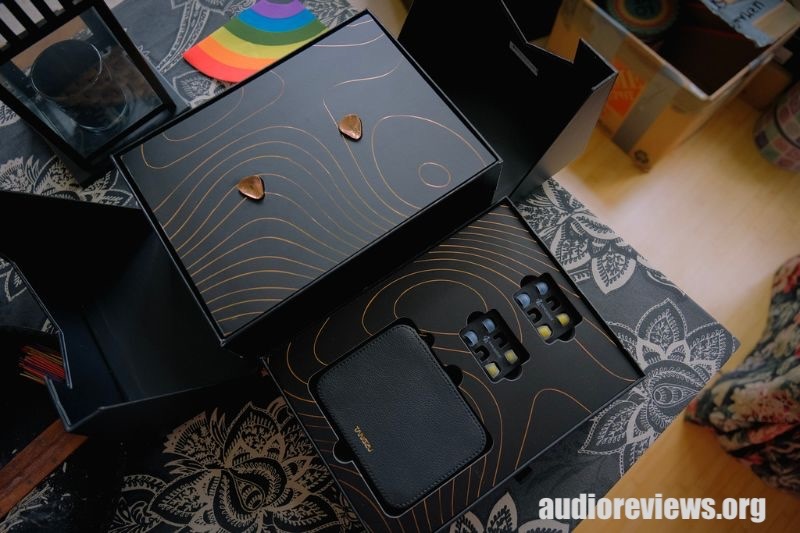
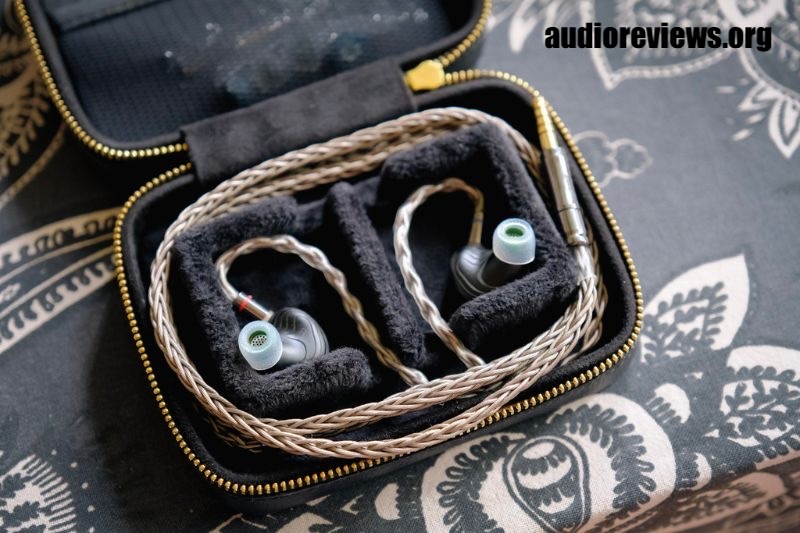
The lower portion of the box holds a drawer that contains the pleather carrying case and two eartip holders with Tang Sancai balanced and wide-bore tips. In my opinion, many IEMs improve in sound with better tips, so it’s nice that there are extra tips to try out.
Build quality
Maybe it’s me becoming tired of medical acrylic but I find the Xuanwu Gate to be superbly made. The earshell consists of three fundamental parts – the copper-plated faceplate, a black CNC-machined aluminum body, and the tip which is copper colored as well. Both the body and the faceplate have these machined ridges which are said to resemble the tiered rice fields of China.
If there’s one gripe I have with the design, it’s that these ridges are very good at catching and storing ear gunk. I had to get a toothpick handy to clean them out every few weeks.
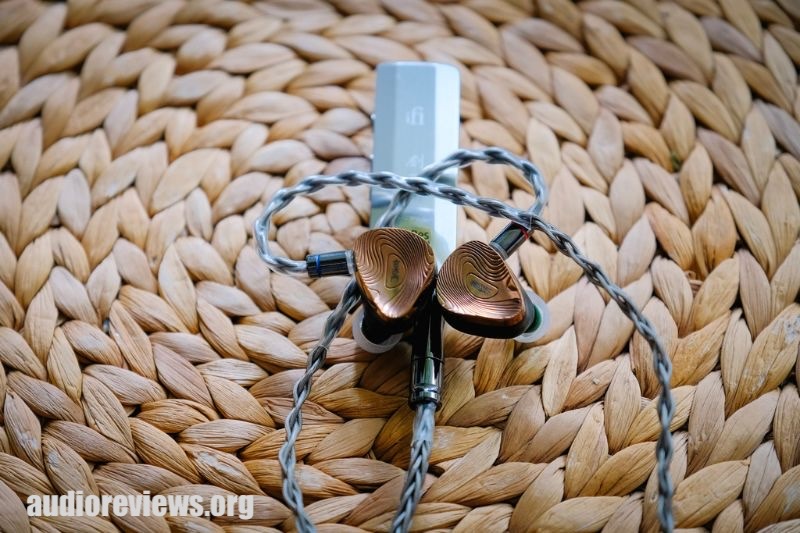
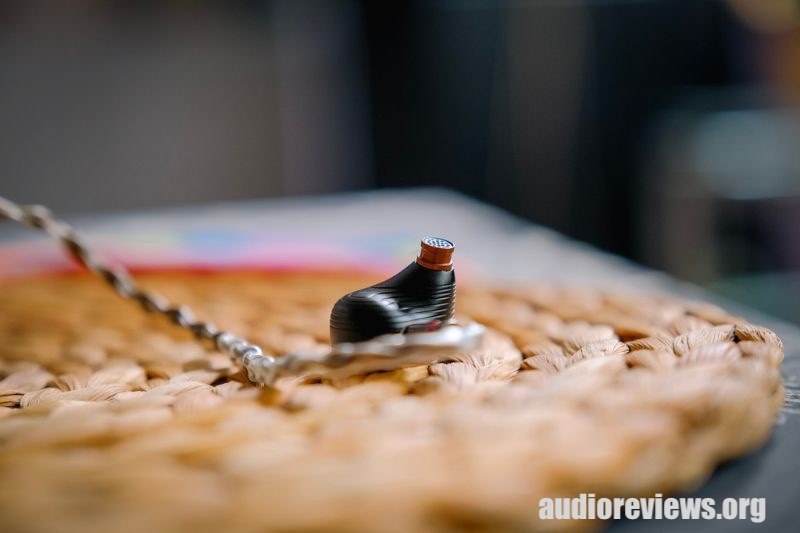
The Xuanwu Gate comes with a silver-plated copper cable that uses 0.78mm pins on the IEM side and the handy 4-pin adaptor on the receiving end. For termination, we have the usual 3.5mm TRS and 4.4mm TRRRS balanced jacks. No 3.5mm to 6.35mm adaptor though, so you’ll probably have to “borrow” one from a friend.
Eartips
The Xuanwu Gate comes bundled with two full sets of Tang Sancai tips, called balanced and wide-bore. There’s also a set of m-sized generic silicone tips already on the IEMs which I found okay. The Tang Sancai tips are more interesting.
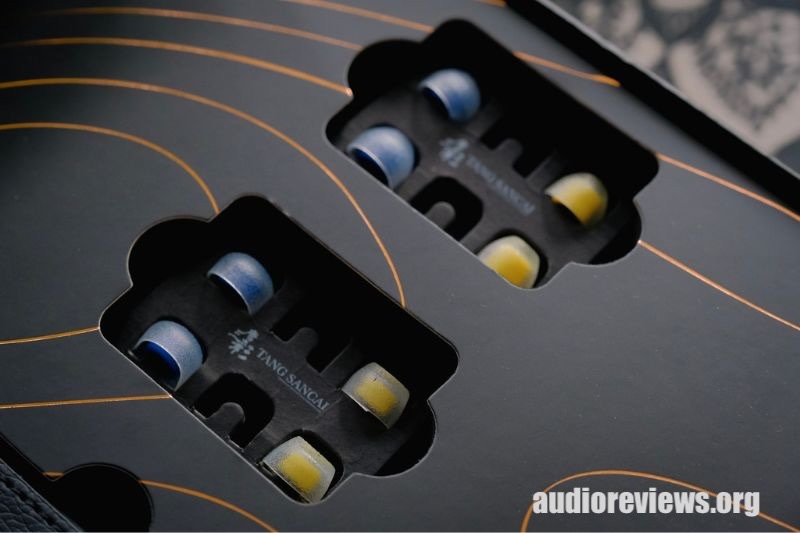
Both the balanced and regular tips are quite comfortable and I’m able to achieve a good seal with either. In the end, I ended up gravitating more toward the wide bores because they highlighted the better qualities of the Xuanwu Gate.
Sound quality and signature
Test setup: On the go, I used my Qudelix 5K and FiiO Q15, while desktop use was tested mostly on the FiiO K19 and SMSL SH-X combo. Occasionally Ifi Go Bar Kensei and FiiO KA17 were used as palate cleansers.
Upon first listening, I was under the impression that the dynamic driver needed extra break-in because the overall sound was quite tilted towards the top end. At the same time, I could immediately identify the superb overtone performance of the Sonion EST pair. In other words – the technicalities were there but I couldn’t detect enough soul to keep me engaged.
After a few days of mostly underwhelming listening the bass driver opened up and we were finally cooking with gas. First off, the low end is more informative than outright fun. I got more extension but not a more pronounced LF shelf. As for the mids – it’s an all-BA affair which I’ve never found objectionable. No plasticky timbre here.
Depending on the recording, the Xuanwu Gate can throw a pretty wide soundstage mostly thanks to its EST top-end drivers. I wasn’t however fully convinced about the tonal response up high and could detect some strangeness there. ESTs alone are known to produce a peaky treble and I feel like this implementation is less impressive than say ESTs in more costly IEMs like the Thieaudio Monarch MK3.
Select comparisons
Simgot EA1000
Let’s start at the lower budget end to better understand what the Xuanwu Gate does well and not so well. The Simgot superstar single-DD has the obvious upper hand at cohesiveness. With the Xuanwu Gate, you can tell when the DD bass driver does the heavy lifting and when the EST tickles your eardrums.
I’d say the biggest advantage of the Xuanwu Gate over the EA1000 is a lot wider genre compatibility. Both are a bit bright-tilted, so could cater to the same type of listener.
Thieaudio Monarch MK3
The question on everyone’s mind is: Why pay more for a tribrid with almost the same driver configuration? Tuning and coherence. It’s a lot harder to detect the individual bands on the Monarch MK3 and the tuning is a lot safer. Both IEMs check the same boxes but the more expensive Thieaudio tribrid makes it all come together much more gracefully.
Unless you prefer the more informative and thin tuning of the Xuanwu Gate, the Monarch MK3 is a direct upgrade, which is to be expected.
NF Audio NE4 Evolution
Like the Xuanwu Gate but want more of the same? The NE4 Evo is just that. Even more informative, less LF-shelf, and overall fun. This is when using the reference filter faceplate as the others are either just plain wrongly tuned or even thinner sounding. Midrange resolution, imaging, and overall realism exceed that of the Xuanwu Gate but it’s a very marmite/vegemite tuning for those with specific tastes.
I’d go with the NE4 Evo only for forensic audio work. Stay tuned for the full review where I’ll elaborate.
Pairing notes
Overall, there are two important things here – I’d recommend steering clear from more clinical or cold-sounding chains. For example, the Colorfly CDA-M2 was too much of a good thing when paired with the Xuanwu Gate. My favorite ended up being the FiiO Q15 with its warm AKM-based signal chain.
High-quality desktop sources displayed the ability of the IEM to scale with better electronics. On the go I never found the gains to be worthwhile due to environmental and skeleton-borne noise but at the desk don’t be afraid to plug the Xuanwu Gate into the best you’ve got.
Concluding Remarks
The Tangzu Xuanwu Gate first blew my socks off with its downright kingly unboxing experience. I hope the summit-fi IEMs pull off something similar. After a couple of auditions, my feelings cooled off to lukewarm. Very competent things are happening across the board, but ultimately, the Xuanwu Gate doesn’t fully nail the landing for me. You get flagship-level ingredients but not the complete holistic package. Recommended for detail freaks and fashionistas; others – audition before buying!
My verdict – 3.5/5
Disclaimer
Thanks to Linsoul for supplying the review sample. As always, they had no say in the review process and didn’t see the review before posting.



